Vietnamese 4 sacred mythical creatures & Where to see them
Vietnamese four sacred mythical creatures have long held deep spiritual meaning in Vietnamese culture. In this guide, we’ll take you on a journey to discover their symbolism and the best places in Vietnam where you can see them in real life.
What are the Vietnamese 4 sacred mythical creatures and their meanings?
In Vietnamese culture, the four sacred mythical creatures – Dragon, Phoenix, Turtle and Qilin – are powerful symbols that represent balance, harmony, and spiritual strength. These creatures are deeply rooted in Vietnamese beliefs, literature, and traditional art, often appearing in temples, royal palaces, and ancient architecture.
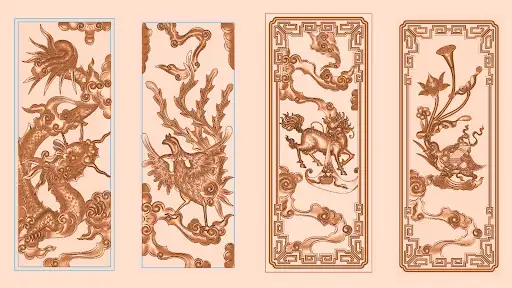
Dragon
The dragon holds the highest status among the four creatures. In Vietnam, the dragon is not a destructive beast but a life-giving, sacred entity. The Vietnamese dragon looks different from the Western dragon. It has a long, snake-like body, covered in cloud-like scales, with a curved tail, a beard, and often holds a flaming pearl in its mouth. It has no wings but is often shown flying between clouds or above water.
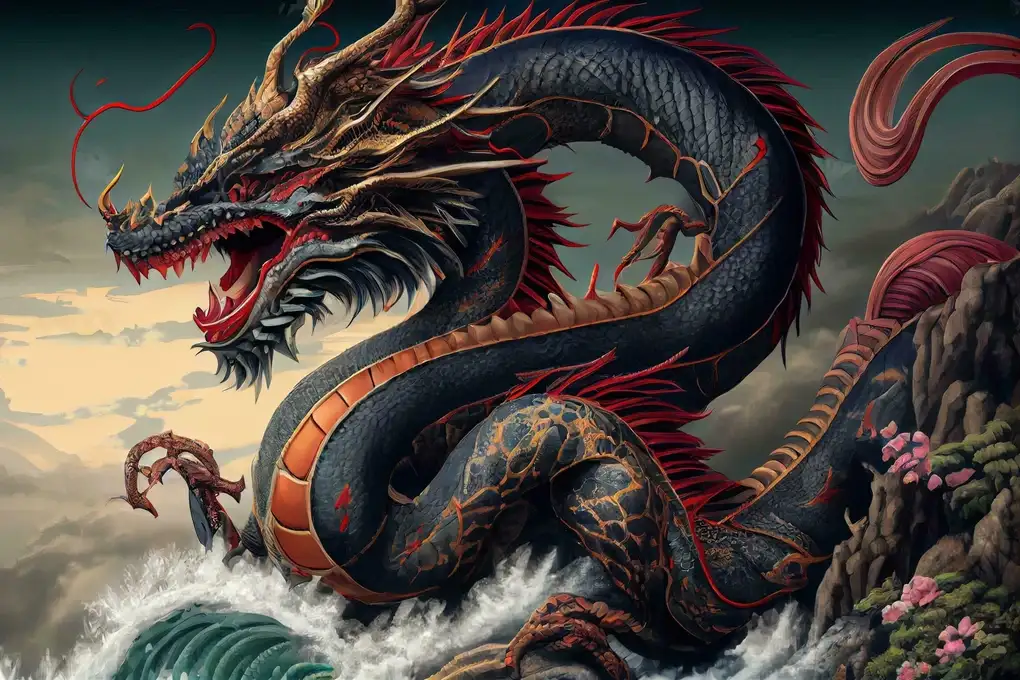
The dragon is believed to control rain, rivers, and storms. That’s why it’s seen as a symbol of life, energy, and prosperity. In the past, only emperors could use the dragon symbol, as it stood for royal power and divine protection.
Vietnamese people are said to be “descendants of the dragon and fairy”. According to the legend, Lac Long Quan, a dragon lord from the sea, married a fairy named Au Co. Their children became the ancestors of the Vietnamese people.
Phoenix
Often seen as the counterpart to the dragon, the phoenix represents the yin to the dragon’s yang. It is a symbol of grace, virtue, beauty, and especially renewal. The phoenix is believed to appear only in peaceful times or to mark the rise of a just and enlightened ruler.
In traditional Vietnamese design, the phoenix is portrayed with a curved, elegant body, flowing feathers, and fiery tails. Its image is most commonly associated with women of nobility, making it a frequent motif in royal costumes, palatial interiors, and temple artwork. When paired with the dragon, the two create a perfect balance of cosmic forces, symbolizing harmony in marriage, governance, and the universe.
Turtle
The turtle is considered a guardian of knowledge, a protector of the past, and a bearer of endurance. In Vietnamese folklore, turtles often appear in stories involving kings, sacred swords, and divine interventions, like the famous legend of the Golden Turtle God at Hoan Kiem Lake.
Architecturally, stone turtles appear beneath steles (stone tablets) in temples and learning institutions like Quoc Tu Giam, where they honor scholars and record achievements. These turtles embody the idea that knowledge must be carried and preserved with care, across generations.
Qilin
The qilin is the most unusual-looking creature. It is a chimera, often shown with the head of a dragon, body of a lion or horse, and legs of a deer. It may have scales, fire-like hair, and a gentle face. Even though it looks fierce, the qilin is a gentle, peaceful creature. It is said to appear only during the time of a wise king or when a great person is born. The qilin stands for honesty, moral strength, and blessings.
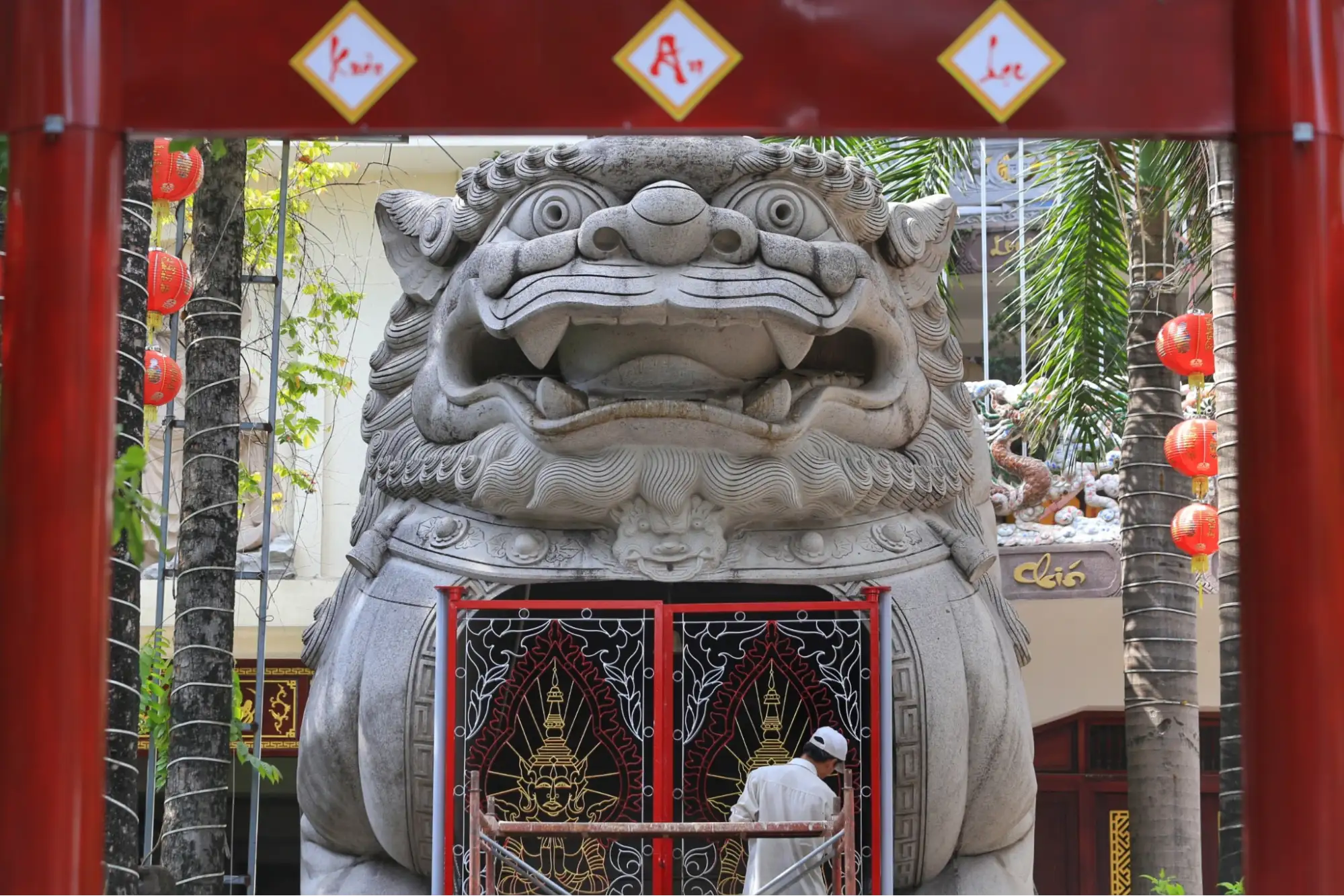
You can find qilin statues in front of temples or tombs as guardians, but they are also common in festival dances. During Tet (Lunar New Year) or Mid-Autumn Festival, you’ll often see colorful qilin dancing to drums, chasing away bad luck and bringing happiness.
Where can you see the Vietnamese 4 mythical creatures?
Over hundreds of years, the four sacred creatures have appeared in Vietnamese art, architecture, and spiritual life. Today, you can still see them in temples, ancient palaces, and even in modern cultural parks. Here are some of the most fascinating places to explore.
Hue Imperial City – Land of the Dragon
If you want to see the dragon in its most majestic form, Hue is the place to go. In the heart of Hue, the Imperial City stands as a living testament to the grandeur of the Nguyen Dynasty. Once the political and cultural center of Vietnam, this UNESCO World Heritage Site showcases the dragon as its most powerful symbol.
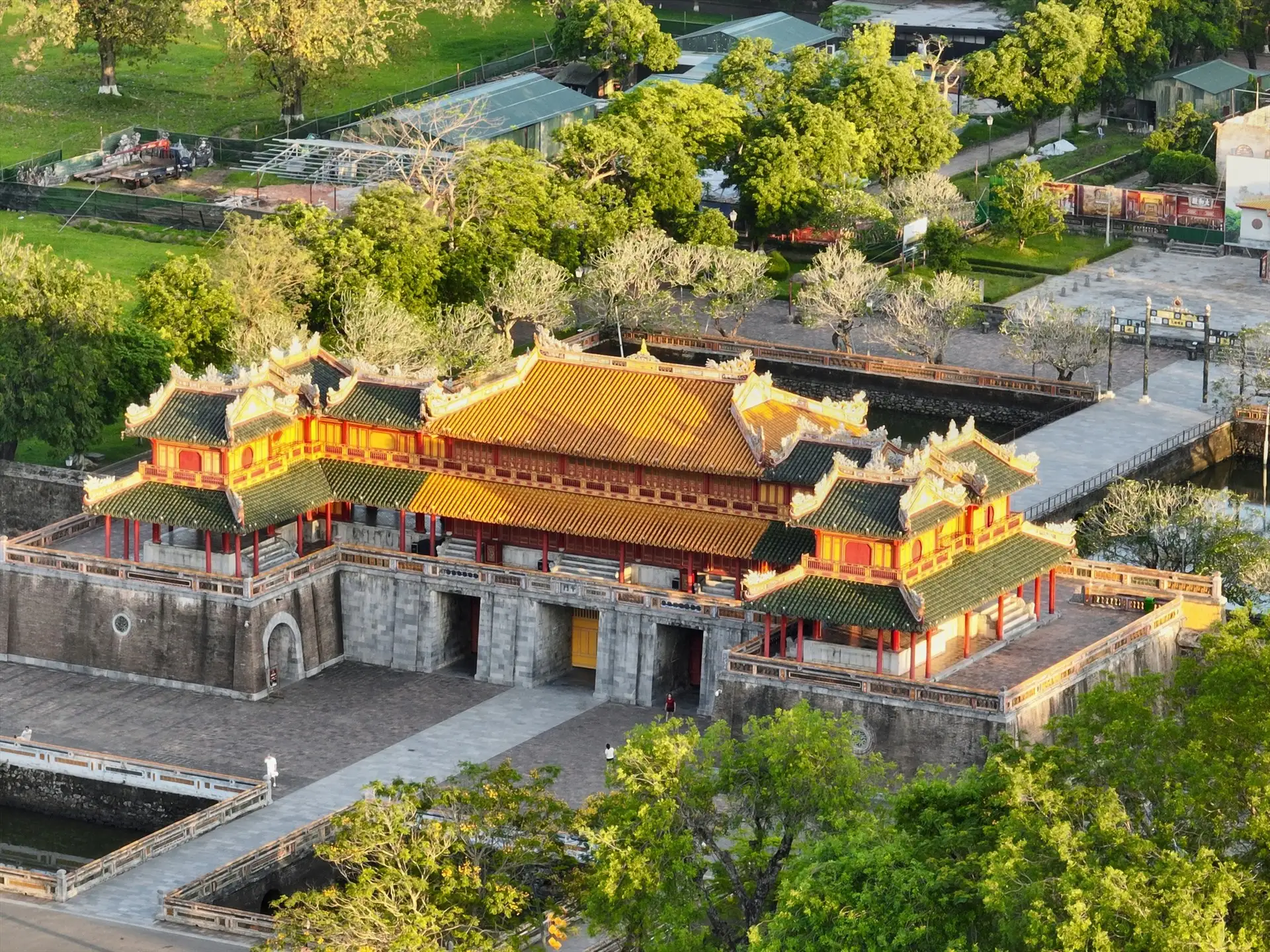
Dragons are intricately carved into palace roofs, wooden pillars, royal thrones, and ceremonial objects. These flowing, elegant motifs reflect not only the exquisite craftsmanship of the era but also the dragon’s association with imperial authority and divine protection.
Read more: Explore key highlights of the Imperial Citadel of Thang Long
Temple of Literature
Tucked in the vibrant heart of Hanoi, the Temple of Literature remains a serene sanctuary of scholarship and tradition. As Vietnam’s first national university, it represents centuries of dedication to education.
Stone turtles found here are perhaps its most iconic features – each one bearing a large stele inscribed with the names of honored scholars. These turtles, stoic and enduring, symbolize the lasting value of wisdom and the duty to preserve it. According to popular belief, gently touching a turtle’s head can bring good luck and academic success. Their presence continues to inspire visitors and students alike, linking Vietnam’s scholarly past to its educational future.
Hoan Kiem lake
Right in the heart of Hanoi, Hoan Kiem Lake is a place filled with legend and national pride. The turtle of Hoan Kiem has become an icon of Hanoi itself, appearing in stories, statues, and souvenirs across the city. According to folklore, after defeating foreign invaders, King Le Loi returned a magical sword to the Golden Turtle God in this very lake. Since then, the image of the turtle has become a powerful symbol of protection, justice, and divine support.
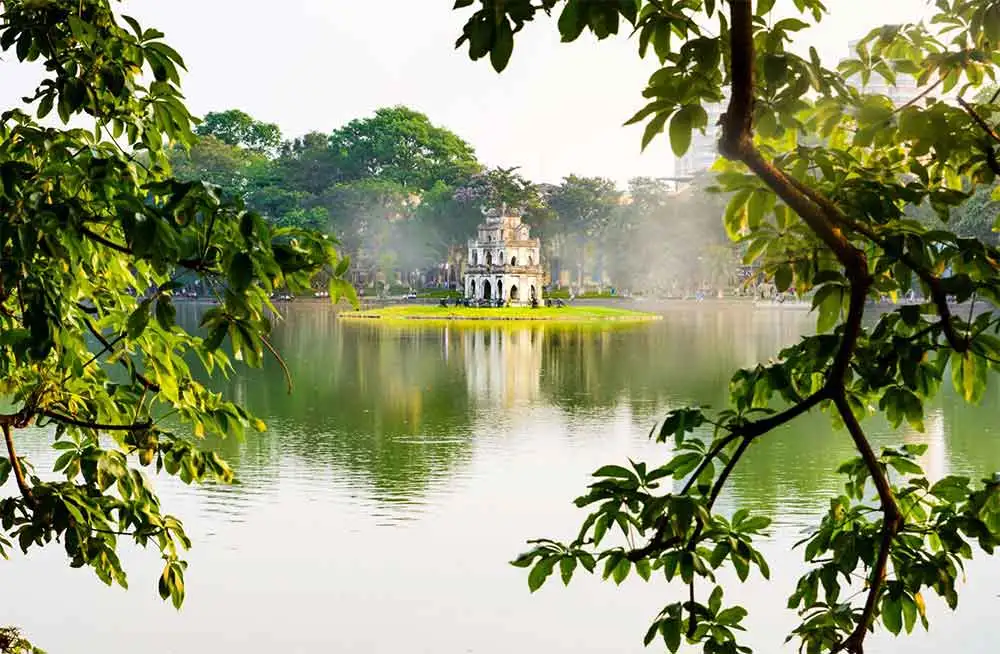
In the middle of the lake stands Turtle Tower, a small structure that honors this sacred story. Nearby, Ngoc Son Temple holds a preserved giant turtle, reminding visitors that the legend once walked among us.
Cam Pho Communal House
Cam Pho Communal House is one of the city’s oldest spiritual structures, dating back to the late 15th century. It’s located just about 17 kilometers from Bliss Hoi An Beach Resort & Wellness, making it a convenient cultural stop for travelers staying near the coast.
Originally built to honor village guardians and ancestral spirits, the house reflects traditional Vietnamese architecture rich in symbolic meaning. Dragons and phoenixes are intricately carved into the wooden beams and altars, representing power and peace. Decorative motifs of the qilin (or unicorn) flank the inner sanctum, believed to bring wisdom and protection.
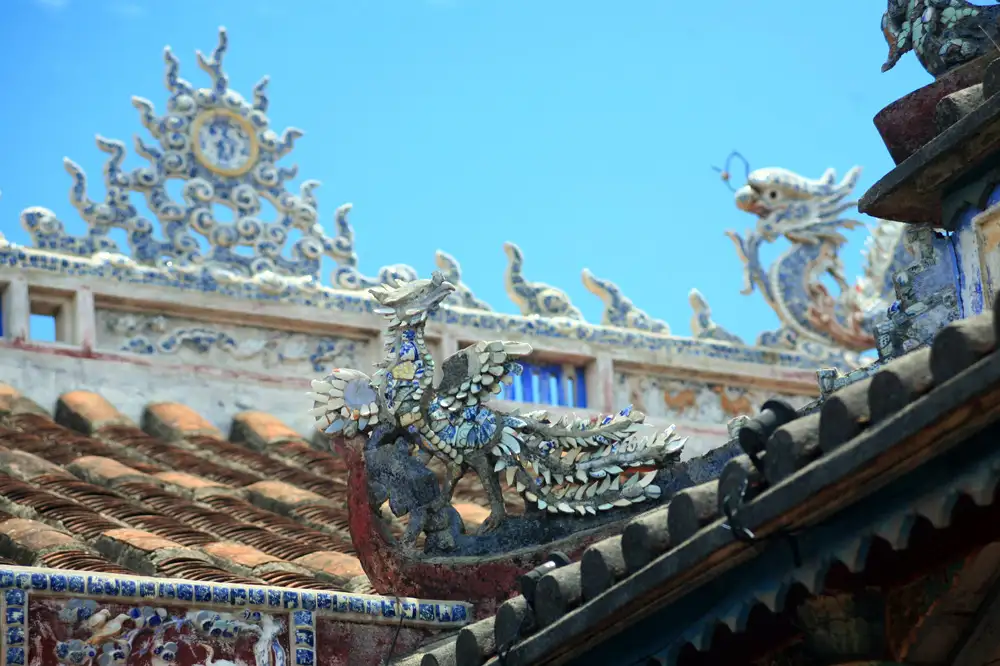
If you have the chance to visit Cam Pho Communal House, Bliss Hoi An Resort & Wellness will be the perfect place to stay, offering a blend of comfort, luxury, and convenience. Located just a short drive from the heart of Hoi An’s Old Town, Bliss Hoi An Beach provides a tranquil retreat where guests can unwind after a day of exploring the city’s rich history and culture.
The resort features a variety of upscale accommodations, from elegant rooms with ocean views to private villas surrounded by lush tropical gardens. Guests can indulge in a range of therapies, enjoy delicious Vietnamese and international cuisine at the on-site restaurant, or take part in activities such as yoga sessions and cooking classes.
With its prime location, luxurious amenities, and outstanding service, Bliss Hoi An ensures that your stay is not only comfortable but memorable, offering an excellent base for discovering the unique charm of Hoi An and its surrounding attractions.
Read more: Duc An old house: The most beautiful ancient house in Hoi An captivates tourists
Linh Ung Pagoda
Perched high on the Son Tra Peninsula in Da Nang, Linh Ung Pagoda is a striking sanctuary that blends natural grandeur with spiritual symbolism. Located approximately 60 kilometers north of Bliss Hoi An Beach Resort & Wellness, this majestic site makes for a meaningful day trip into the hills.
The pagoda is famous for its colossal 67-meter-tall Lady Buddha statue, but a closer look reveals the presence of Vietnam’s four sacred creatures throughout its grounds. Dragons curl along staircases, rooftops, and entrance gates, symbolizing celestial protection. Phoenixes, carved in flowing detail, reflect harmony and feminine energy, while qilin stand guard near the main hall, associated with righteousness and good fortune.
With its panoramic views of the ocean and Da Nang’s skyline, Linh Ung Pagoda is a must-visit destination if you want to explore both the beauty of the region and admire the Vietnamese 4 sacred mythical creatures in the pagoda’s architecture.
Tips for visiting these sacred destinations in Vietnam
Visiting sites connected to the Vietnamese 4 sacred mythical creatures offers not only a chance to appreciate stunning architecture but also to immerse yourself in the rich cultural and spiritual heritage of the country. Here are some practical tips to help you make the most of your visit.
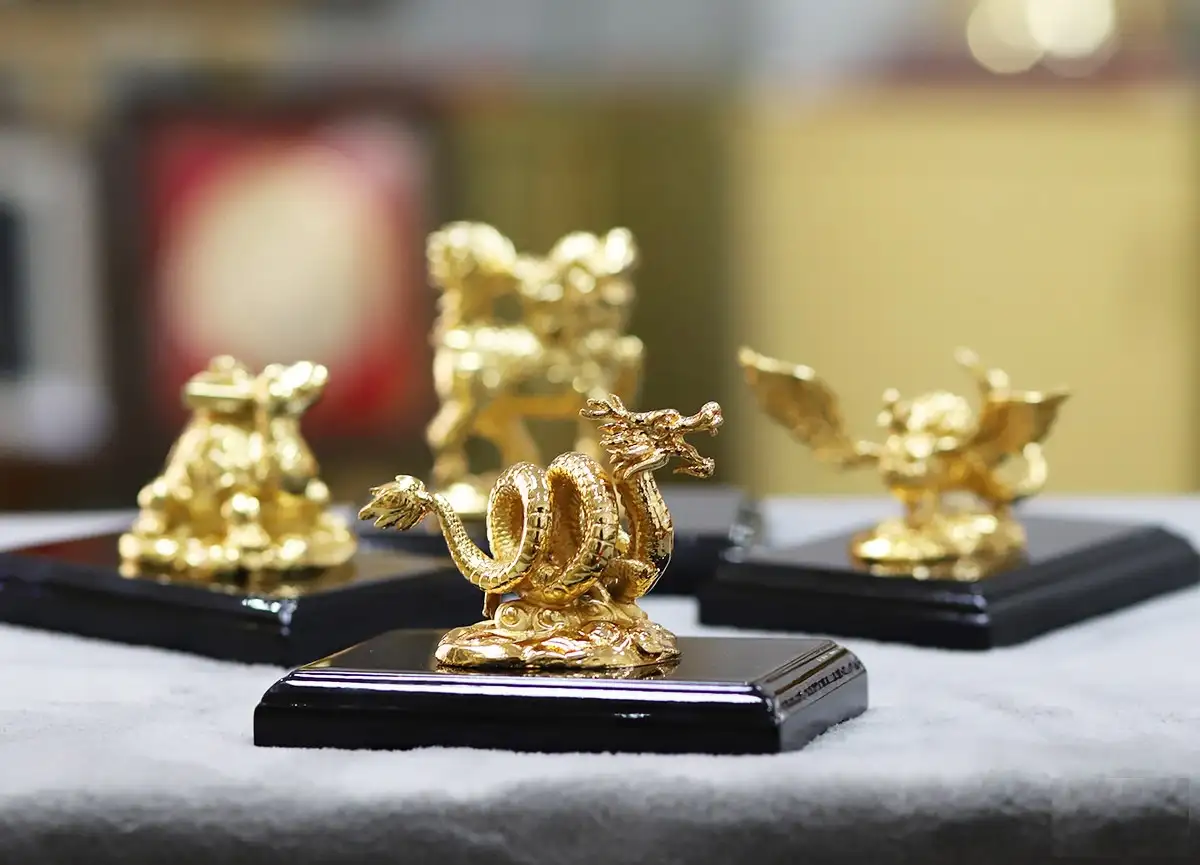
- Do some research before your visit: Before heading to destinations like Linh Ung Pagoda or Imperial City of Hue, take some time to learn about the history and legends of the Vietnamese 4 sacred mythical creatures. Understanding the stories behind the dragon, phoenix, turtle, and qilin will deepen your experience and appreciation of their symbolic significance. You can check online resources, guidebooks, or even ask locals for insights.
- Plan your visit for off-peak hours: Many of the spiritual sites, such as Hoan Kiem Lake and Quoc Tu Giam, can get crowded during peak tourist seasons. To avoid the crowds and have a more peaceful experience, try visiting early in the morning or later in the afternoon. These hours are also ideal for taking photos with fewer people around, letting you capture the essence of these sacred places.
- Look for unique souvenirs: At many of these destinations, you’ll find souvenirs featuring the Vietnamese 4 sacred mythical creatures. These could be in the form of small sculptures, paintings, or handcrafted items like ceramics and textiles. A piece of artwork representing the dragon, phoenix, turtle, or qilin makes for a meaningful and unique gift or keepsake from your trip.
In Vietnam, you’ll easily come across images of the Vietnamese 4 sacred mythical creatures at spiritual sites, historic landmarks, or even woven into everyday objects used by locals. If you’re fascinated by these mythical symbols, there’s no better time to pack your bags and set out to explore the incredible destinations mentioned above.








